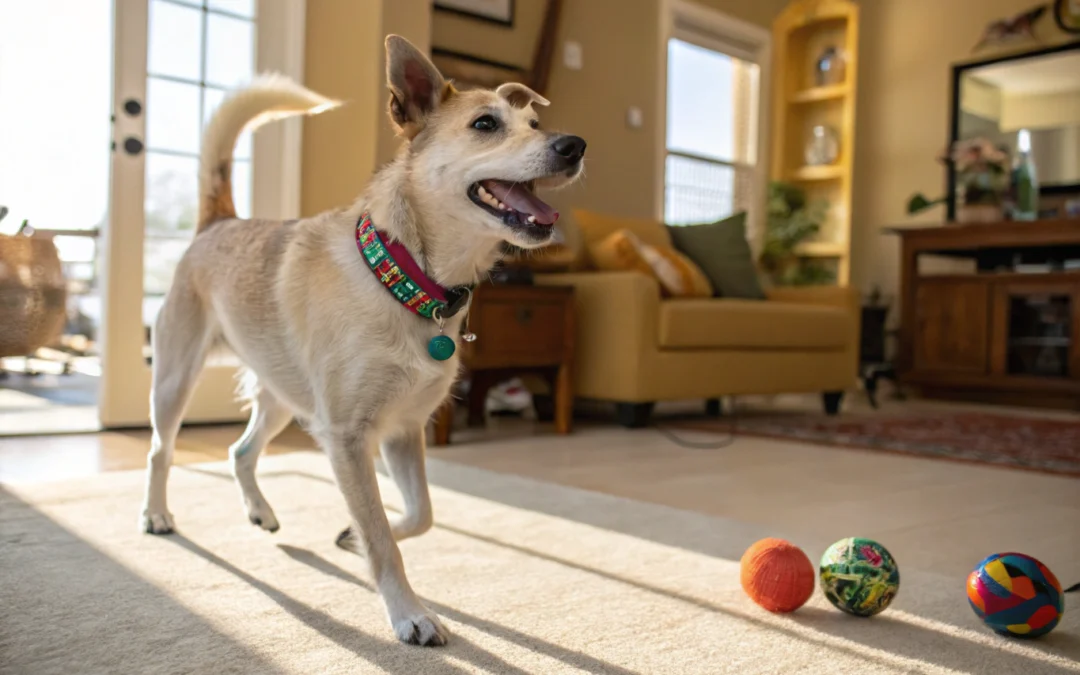Unraveling the Mystery of Dogs’ Happiness
Imagine for a moment the pure, unfiltered joy of a dog wagging its tail as you walk through the door—that simple act of happiness has fascinated humans for centuries. We’ve all seen it: dogs bounding around, their eyes sparkling, their bodies vibrating with excitement. But what really makes our furry friends happy? Is it just belly rubs and treats, or is there more to this canine bliss? To dive deep into this, I recommend checking out dogs happiness, a fascinating exploration of what truly sparks joy in dogs’ lives.
The Blueprint of Canine Joy
Beyond the Basics: The Emotional Spectrum of Dogs
When we think about happiness, we often think in human terms—smiles, laughter, contentment. But dogs experience emotions differently, yet with remarkable depth. According to recent research, dogs feel a wide range of emotions, from excitement to contentment, and even love. Their happiness isn’t just about getting what they want, but about feeling secure, connected, and understood. The story of a dog’s happiness is rooted in a complex interplay of biology and environment. Their brains release chemicals like serotonin and dopamine, which are directly linked to feelings of pleasure and satisfaction. When a dog receives affection, engages in play, or learns something new, these chemicals flood their system, creating that unmistakable feeling of joy.The Role of Human Interaction
Humans are the central characters in a dog’s happiness story. The bond we share with our dogs profoundly influences their well-being. Simple acts—like talking gently, making eye contact, or playing fetch—can enhance their happiness levels. It’s like a mutual exchange: when we shower them with love and attention, they respond with boundless enthusiasm. Think about a typical day with your dog. Throwing a ball, going for a walk, or just cuddling on the sofa—these moments are not just fun; they’re vital for their mental health. Dogs are social creatures, and feeling like part of the family unit boosts their confidence and happiness.Understanding Canine Needs and Happiness Triggers
Physical Exercise and Mental Stimulation
Ever noticed how a tired dog is a happy dog? Regular physical activity is crucial, but mental stimulation is equally important. Puzzle toys, training sessions, and new environments challenge their minds, releasing those feel-good chemicals and preventing boredom—one of the biggest threats to canine happiness. Imagine a dog spending hours solving a puzzle to reach a treat. The sense of achievement and engagement lights up their brain, fostering a deep sense of satisfaction. It’s like a mental workout that keeps their spirits high.Consistency and Routine
Dogs thrive on predictability. A steady routine—regular feeding times, walks, and bedtime—creates a sense of security. When their environment feels safe and predictable, their stress levels drop, and happiness naturally follows. Think of it as a sci-fi universe where chaos is replaced by order. Just as a well-structured spacecraft makes for a smooth journey, a predictable routine makes for a happy, balanced dog.What We Can Learn From Dogs’ Happiness
The story of canine happiness isn’t just about our furry friends; it’s a mirror reflecting fundamental truths about well-being. Dogs teach us that connection, purpose, and a bit of fun are the keys to a joyful life. In a way, understanding what makes dogs happy can inspire us humans to prioritize authentic relationships, embrace playfulness, and find joy in simple routines. After all, if our best friends can find happiness in the little things, maybe we should too.Conclusion
The science behind dogs’ happiness reveals a rich tapestry of emotions, biology, and social bonds. Their joy is a complex, beautiful experience that depends on love, stimulation, and security. As pet owners, caregivers, or just fellow humans, recognizing these needs helps us foster happier, healthier lives for our canine companions—and perhaps, for ourselves as well. So next time you see your dog wagging its tail or cuddling close, remember: their happiness is a story worth understanding. And maybe, just maybe, it can teach us a thing or two about living with more joy and connection. For a deeper dive into what makes our dogs truly happy, check out the full article at dogs happiness.Checkout ProductScope AI’s Studio (and get 200 free studio credits)

